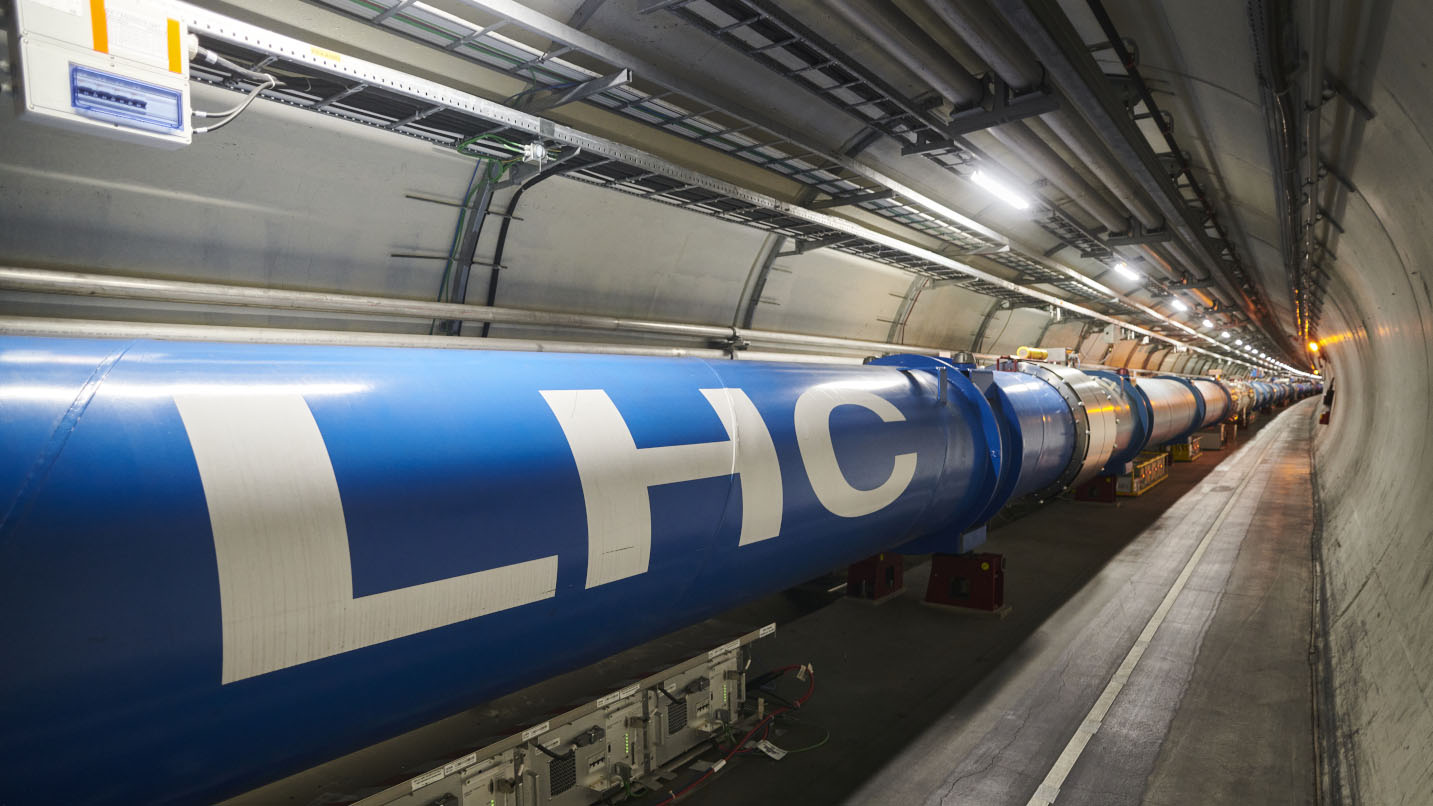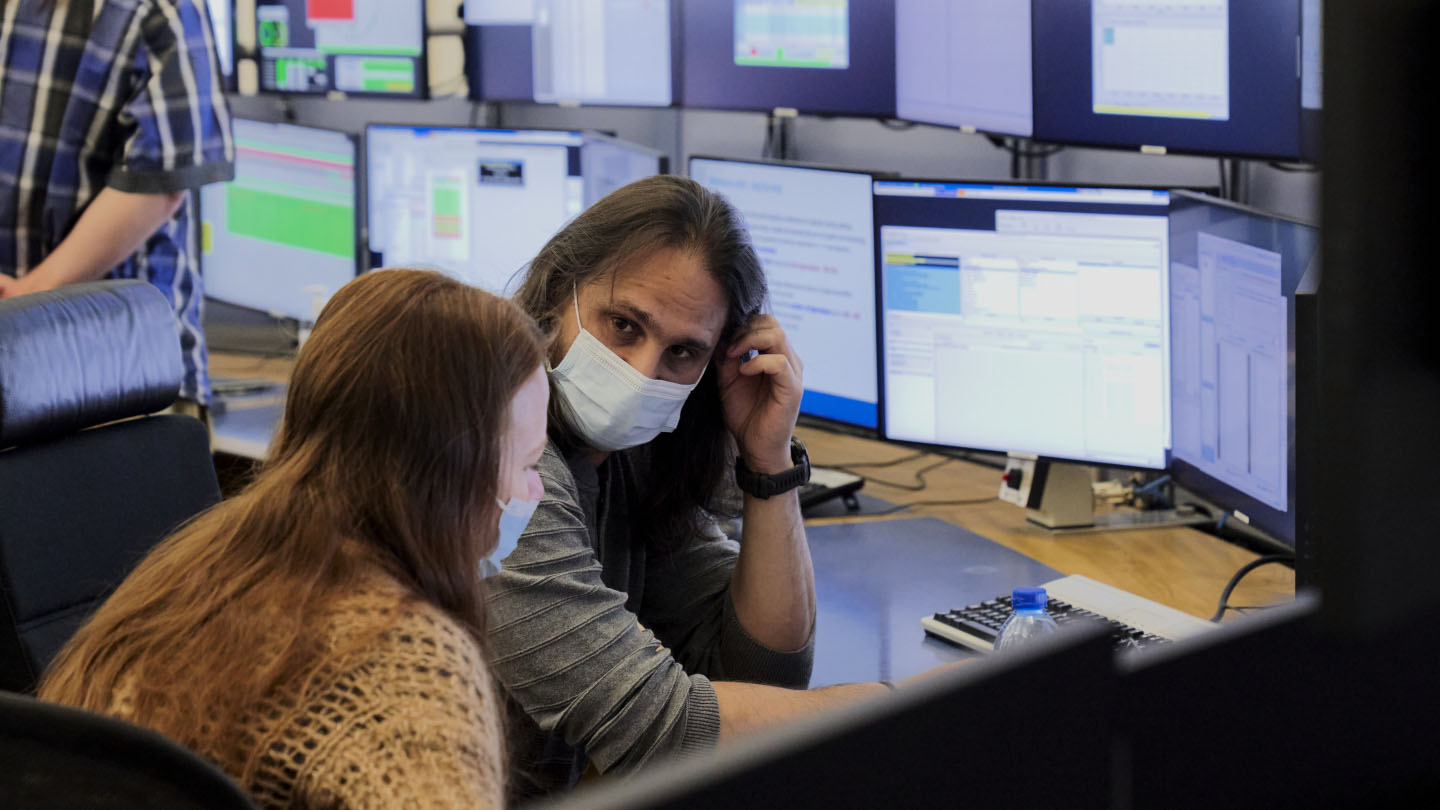Large Hadron Collider restarts to push physics to the edge
The revamped LHC will see more particle collisions and mind-blowing energy levels to hunt for dark matter and extra dimensions.

Scientists overseeing the largest particle accelerator on Earth switched it on for the first time in three years this weekend to solve some of the biggest mysteries in physics.
The Large Hadron Collider (LHC), the powerful particle accelerator located at CERN near Geneva, Switzerland, restarted on Friday (April 22) after a three-year shutdown for maintenance and upgrades. The reactivation kicked off what scientists call Run 3, the LHC's third science run, which will perform experiments through 2024.
"The machines and facilities underwent major upgrades during the second long shutdown of CERN’s accelerator complex," Mike Lamont, CERN's Director for Accelerators and Technology, said in a statement Friday. "The LHC itself has undergone an extensive consolidation programme and will now operate at an even higher energy and, thanks to major improvements in the injector complex, it will deliver significantly more data to the upgraded LHC experiments." Those experiments will build on LHC's discoveries during its Run 1 (2009-2013) and Run 2 (2015-2018).
Related: Large Hadron Collider will explore the cutting edge of physics after 3-year shutdown
For its reactivation, scientists fired up the LHC's 16.7-mile-long ring (27 kilometers) to inject two beams of protons in opposite directions at an energy level of 450 billion electronvolts. That's just an appetizer for even higher energy levels LHC will operate at once it reaches its target of a mind-blowing 13.6 trillion electronvolts for Run 3, scientists said.
"These beams circulated at injection energy and contained a relatively small number of protons. High-intensity, high-energy collisions are a couple of months away,” said Rhodri Jones, who leads CERN's Beams department, in the statement. "But first beams represent the successful restart of the accelerator after all the hard work of the long shutdown."
LHC's three-year shutdown allowed scientists to make substantial upgrades to four key experiments on the particle accelerator. It's ATLAS and CMS detectors detectors alone will receive more particle collisions than the past two runs combined, according to CERN. ATLAS (short for A Toroidal LHC Apparatus) detects the tiny subatomic fragments from particle collisions and is used to hunt for the Higgs Boson, dark matter and extra dimensions. CMS (short for Compact Muon Solenoid) is a general-purpose detector that uses different systems for observations similar to ATLAS.
Get the Space.com Newsletter
Breaking space news, the latest updates on rocket launches, skywatching events and more!

In addition to ATLAS and CMS, the particle accelerator's ALICE experiment for heavy-ion collisions will be able to detect 50 times more collisions thanks to its upgrade, while another instrument, called LHCb, will see its detection capability increase by a factor of three, according to CERN.
"The unprecedented number of collisions will allow international teams of physicists at CERN and across the world to study the Higgs boson in great detail and put the Standard Model of particle physics and its various extensions to the most stringent tests yet," CERN officials wrote in the statement.
Two new experiments will be activated on LHC for Run 3. Called the Forward Search Experiment (FASER) and the Scattering and Neutrino Detector at the LHC (SND@LHC), they are expected to explore new physics beyond the Standard Model, measure how often antimatter forms and explore the physics of cosmic rays and a strange state of matter called quark-gluon plasma.
It will take several weeks of commissioning work before the revamped LHC will be ready for actual science measurements. Those science runs are expected to begin in the summer, CERN officials have said.
Once Run 3 concludes in 2024, CERN scientists will shut it down for another planned overhaul that will include more upgrades for the massive particle accelerator. Once complete, those upgrades will allow scientists to rename LHC the "High Luminosity Large Hadron Collider" once it reopens in 2028.
Email Tariq Malik at tmalik@space.com or follow him @tariqjmalik. Follow us @Spacedotcom, Facebook and Instagram.
Join our Space Forums to keep talking space on the latest missions, night sky and more! And if you have a news tip, correction or comment, let us know at: community@space.com.

Tariq is the Editor-in-Chief of Space.com and joined the team in 2001, first as an intern and staff writer, and later as an editor. He covers human spaceflight, exploration and space science, as well as skywatching and entertainment. He became Space.com's Managing Editor in 2009 and Editor-in-Chief in 2019. Before joining Space.com, Tariq was a staff reporter for The Los Angeles Times covering education and city beats in La Habra, Fullerton and Huntington Beach. In October 2022, Tariq received the Harry Kolcum Award for excellence in space reporting from the National Space Club Florida Committee. He is also an Eagle Scout (yes, he has the Space Exploration merit badge) and went to Space Camp four times as a kid and a fifth time as an adult. He has journalism degrees from the University of Southern California and New York University. You can find Tariq at Space.com and as the co-host to the This Week In Space podcast with space historian Rod Pyle on the TWiT network. To see his latest project, you can follow Tariq on Twitter @tariqjmalik.









